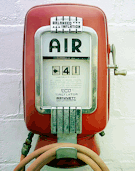Tire pressure So its that time again. Time when the weather cools and your tire pressure drops, as directed by nature, and you’ll soon see the Tire Pressure Monitor System (TPMS) light. The one that looks too much like a horseshoe. And mine did as well. So off I went to the gas station to …
Tag: Tire pressure
Permanent link to this article: https://dashboardsymbols.com/2025/10/tire-pressure-season-approaches/
Permanent link to this article: https://dashboardsymbols.com/2024/11/a-word-on-tire-pressure-and-tire-pressure-guages/
Are You Seeing a Horseshoe-shaped Dashboard Warning Light?
What is the Horseshoe-shaped Dashboard Warning Light? At this writing, its cold weather time again and time again to speak about the Tire Pressure Monitoring System (TPMS), and its associated warning light(s). Every year several million more drivers who have recently upgraded their cars will encounter the light for the first time. These are two …
Permanent link to this article: https://dashboardsymbols.com/2023/12/are-you-seeing-a-horseshoe-shaped-warning-light/


Tire pressure season approaches
Tire pressure season To the right is a large version of the Tire Pressure Monitoring System (TPMS) or Tire Pressure Monitor (TPM) warning light. The tell-tale comes on during tire pressure season, when the air outside begins to cool and shrink. More precisely, the symbol will be seen when the inflation on at least one …
Continue reading